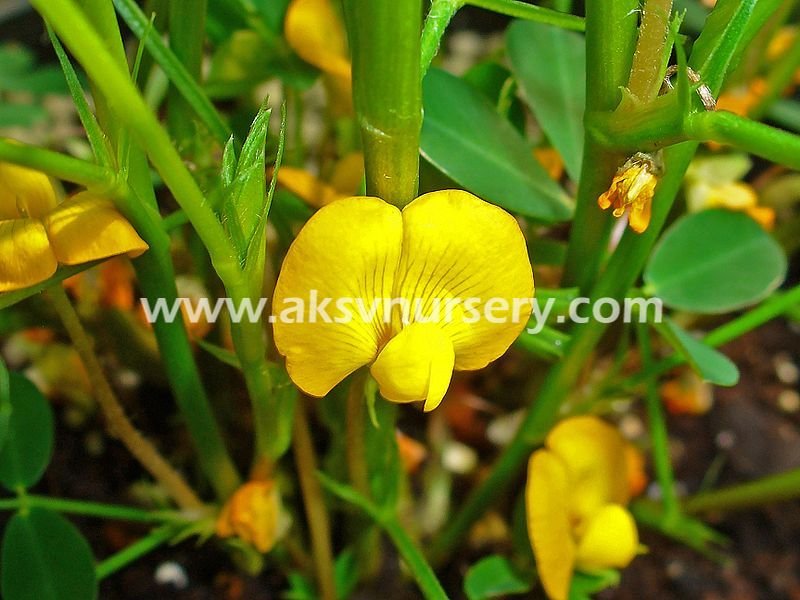Arachis hypogaea
Family: Faboideae / Leguminosae / Papilionaceae
Peanut
Origin: South America
Species in the genus Arachis have an interesting reproductive biology because the seed-containing pods mature underground instead of aerially as in most legumes. The flowers don’t usually open, and are self-pollinated. After pollination, there is cell division below the young pod sending it down on a stalk and pushing it into the ground where it matures. Seeds yield a non-drying, edible oil, used in cooking, margarines, salads, canning, for deep-frying, for shortening in pastry and bread, and for pharmaceuticals, soaps, cold creams, pomades and lubricants, emulsions for insect control, and fuel for diesel engines. The oil cake, a high-protein livestock feed, may be used for human consumption. Other products include dyes, ice cream, massage oil, paints, and peanut milk. Seeds are eaten raw, whole roasted and salted, or chopped in confectioneries, or ground into peanut butter. Young pods may be consumed as a vegetable. Young leaves and tips are suitable as a cooked green vegetable.







